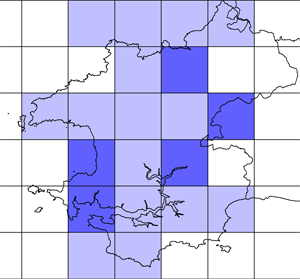Winter visitor
Both Mathew (1894) and Lockley et al (1949) described the Common Gull as a frequent autumn and winter visitor, a status which has not changed.
The birds begin to arrive from early August onwards, and are mostly adults, sometimes accompanied by birds of the year. The main winter population arrives in October, recoveries suggesting a northern European origin. For instance, one ringed in north Germany in July 1953 was recovered at Lamphey in February 1956 and another ringed at Skokholm in February 1956 was recovered in Norway in June 1957. Small numbers frequent the outer coastline and the estuaries but most forage widely across inland fields, commuting from the main roosts at Fishguard harbour, Cleddau Estuary and Amroth-Saundersfoot, with an average count total of about 4000 birds. Most depart during March with a few others passing through in April and May, while first year birds occasionally summer at the coast.
Donovan J.W. & Rees G.H (1994), Birds of Pembrokeshire
 Thursday, October 24, 2013 at 5:57PM
Thursday, October 24, 2013 at 5:57PM  1949 BoP in
1949 BoP in  Common Gull
Common Gull 


